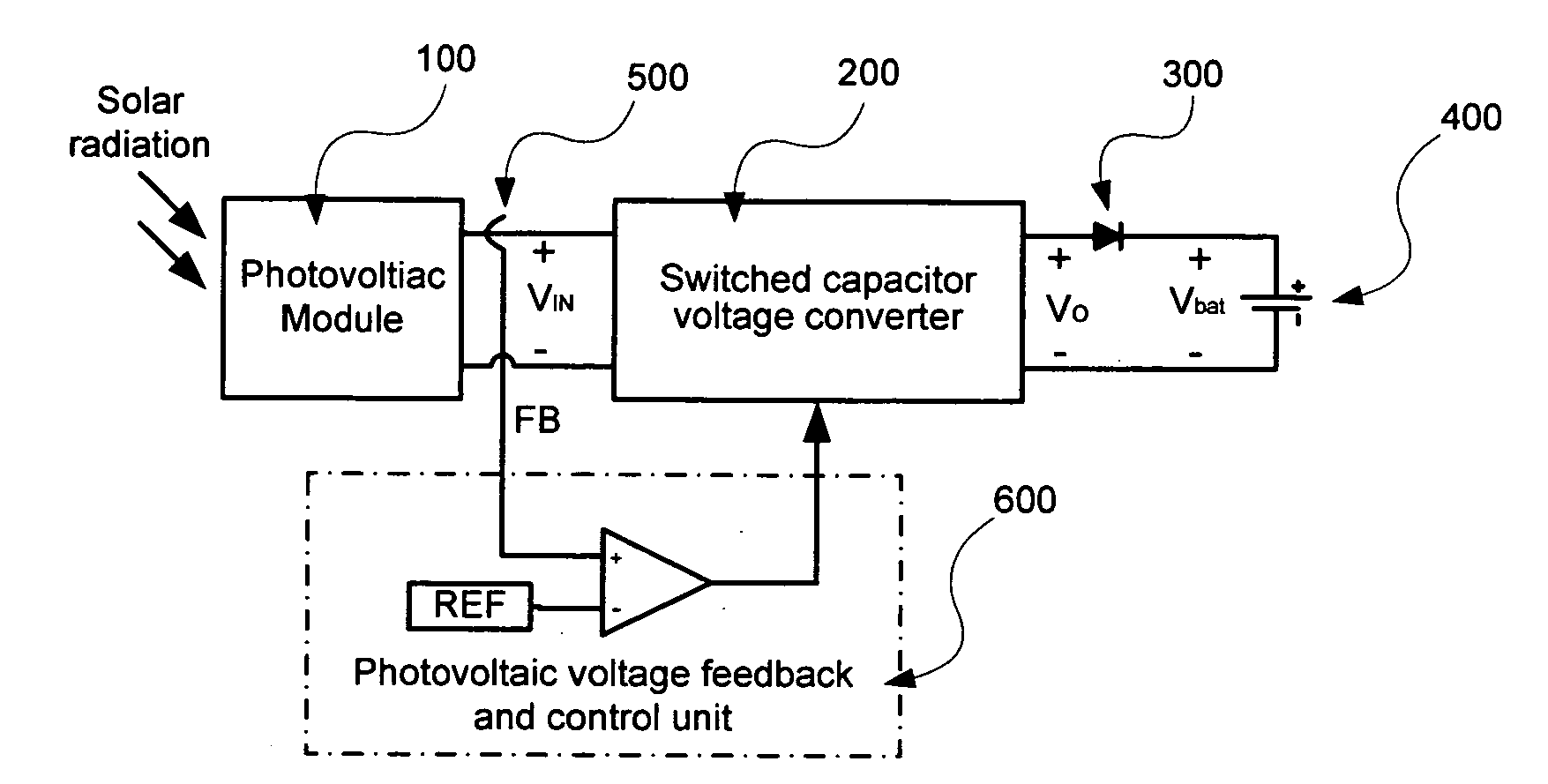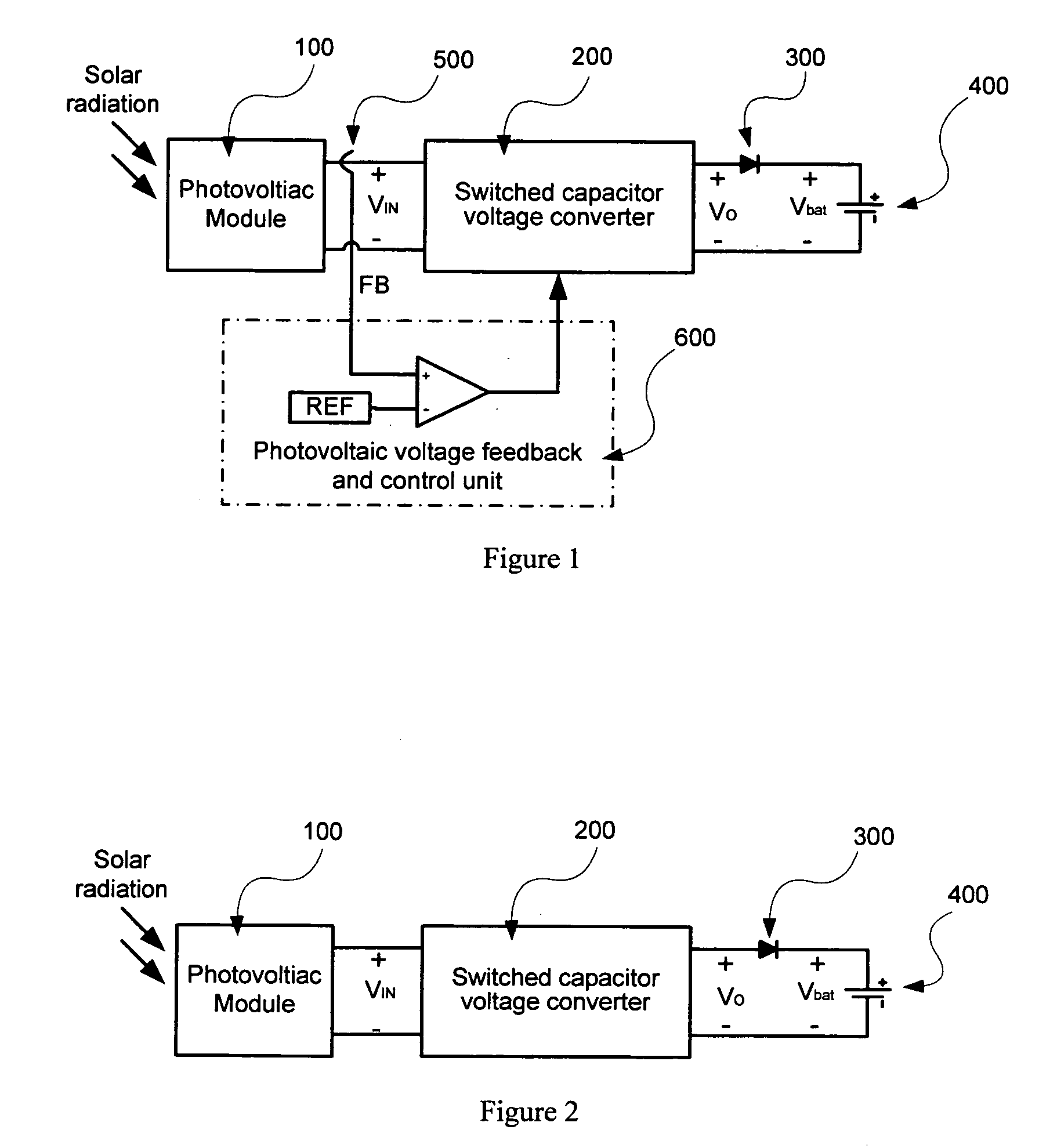Solar powered battery charger using switch capacitor voltage converters
a technology of switch capacitor and voltage converter, which is applied in the direction of photovoltaic energy generation, secondary cell charging/discharging, electric vehicles, etc., can solve the problems of limiting current output and limiting conversion ratio, and achieve the effect of reducing costs, eliminating emi concerns and battery drainag
- Summary
- Abstract
- Description
- Claims
- Application Information
AI Technical Summary
Benefits of technology
Problems solved by technology
Method used
Image
Examples
Embodiment Construction
[0020]FIG. 1 shows an embodiment of the invention. The photovoltaic module (100) produces electric power when it is exposed to sunlight. To charge the battery (400), the switched capacitor voltage converter (200) serves as the power interface, which adopts the solar power and converts the voltage to a certain level, Vo. The power interface (200) can be comprised of a voltage doubler, and / or a voltage inverter, and / or a voltage tripler, or a combination of these topologies.
[0021]When solar power is available, the output voltage, Vo, should be higher than the battery voltage, Vbat. The capacity of photovoltaic power generation depends heavily on the presence of sunlight. At night, a current may flow back to the photovoltaic cells from devices that can supply electric power. This reverse current must be avoided because it can result in leakage loss, extensive damage, or even fire. The blocking device (300) should be used to prevent this reverse current flow.
[0022]In terms of maximum po...
PUM
 Login to View More
Login to View More Abstract
Description
Claims
Application Information
 Login to View More
Login to View More - R&D
- Intellectual Property
- Life Sciences
- Materials
- Tech Scout
- Unparalleled Data Quality
- Higher Quality Content
- 60% Fewer Hallucinations
Browse by: Latest US Patents, China's latest patents, Technical Efficacy Thesaurus, Application Domain, Technology Topic, Popular Technical Reports.
© 2025 PatSnap. All rights reserved.Legal|Privacy policy|Modern Slavery Act Transparency Statement|Sitemap|About US| Contact US: help@patsnap.com



